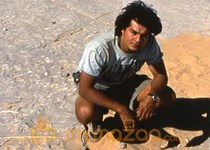Washington, March 2 (ANI): A team of scientists has discovered the remains of an extraordinary fossil of a snake in India that fed on newly hatched dinosaurs 67 million years ago.
The remains of the snake were found in 67-million-year-old sediments from Gujarat, western India.
An international paleontological team led by University of Michigan’s Jeff Wilson and the Geological Survey of India’s Dhananjay Mohabey, made the finding.
The remains of the nearly complete snake were found preserved in the nest of a sauropod dinosaur, adults of which are the largest animals known to have walked the earth.
The snake was coiled around a recently hatched egg adjacent to a hatchling sauropod.
Remains of other snake individuals associated with egg clutches at the same site indicate that the newly described snake made its living feeding on young dinosaurs.
“It was such a thrill to discover such a portentous moment frozen in time,” said Mohabey, who made the initial discovery in the early 1980s.
Preparation of the fossil at the U-M revealed the snake was coiled around a crushed dinosaur egg next to a freshly hatched sauropod dinosaur.
“We think that the hatchling had just exited its egg, and that activity attracted the snake,” said Mohabey.
“The eggs were lain in the loose sands near a small drainage and covered by a thin layer of sediment,” he added.
The arrangement of the bones and delicate structures, such as eggshells and the snake’s skull, point to quick entombment.
“Sedimentation was unusually rapid and deep for this formation – a pulse of sand, probably mobilized during a storm, resulted in the preservation of this spectacular association,” said geologist Shanan Peters of the University of Wisconsin, who interpreted the paleoenvironment of the site.
The new snake, which was named Sanajeh indicus or “ancient-gaped one from the Indian subcontinent,” because of its lizard-like gape, adds critical information that helps resolve the early diversification of snakes.
Modern large-mouthed snakes are able to eat large prey because they have mobile skulls and wide gapes.
Sanajeh bears only some of the traits of modern large-mouthed snakes and provides insight into how they evolved.
“Sanajeh was capable of ingesting the half meter-long sauropod hatchling because it was quite large itself, almost 3.5 meters long,” said snake expert Jason Head of the University of Toronto-Mississaugua.
“This points to an interesting evolutionary strategy for primitive snakes to eat large prey by increasing their body size,” he added. (ANI)







